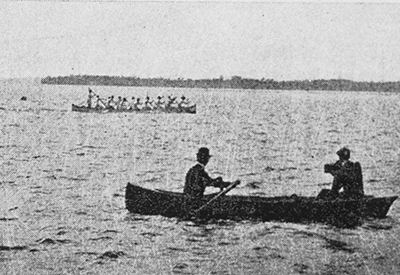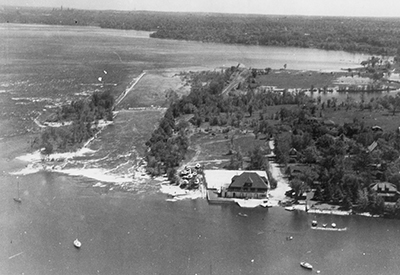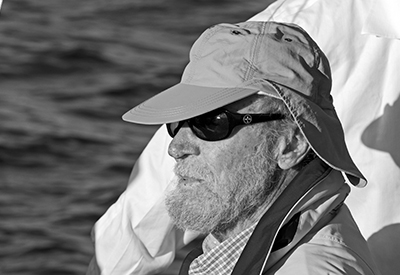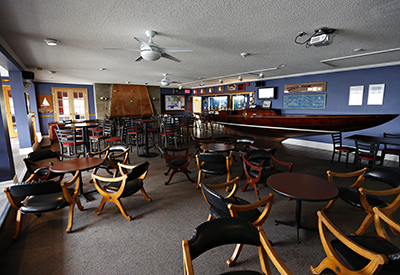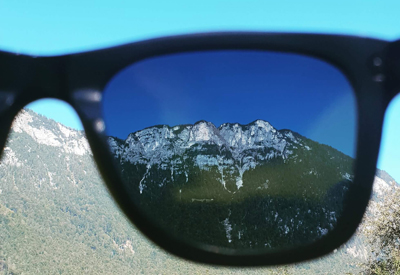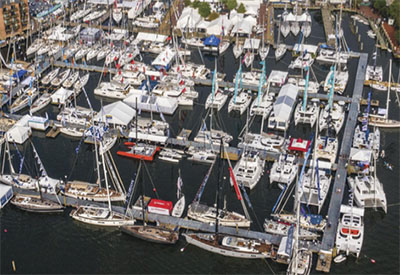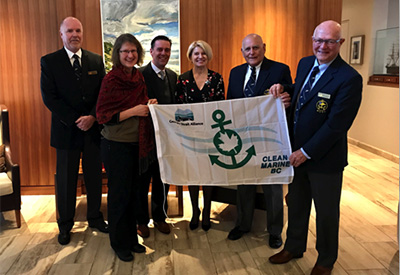Britannia Yacht Club
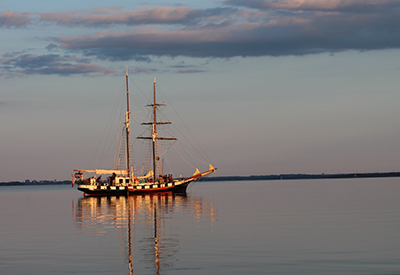
By Katherine Stone
An interest to be on the water, do things on the water, and enjoy it with friends who like to do the same, is the driving force behind just about any boating club in the world. Add to that a driving desire to continue to improve upon what you have, so that your club becomes a destination to meet friends outside the sailing season, and you have a truly wonderful experience that has helped to form this club; a club that would change its name five times before finally settling on the Britannia Yacht Club.
The early voyageurs travelled the Ottawa River on their way to the Northwest and Georgian Bay. Because of the treacherous Deschenes Rapids, the Britannia shore (across the river from present day Aylmer, Quebec) became a busy portage launching place. A settlement was formed around 1823 when Captain John LeBreton received a land grant and established a lumber operation. Another sawmill soon followed and summer residents started to enjoy boating activities, which led to the loose establishment of an organization known as Britannia-on-the-Bay Yachting Association.
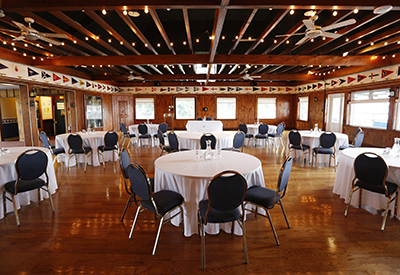 As documented in “Britannia Yacht Club – A History of Water, Place and People 1887-2012”, things became a bit more formal by 1887 when it became officially known as The Britannia Aquatic Club, meeting in an old saw mill. By 1891, the first organized sailing, canoe, and rowing regatta was held. Running out of things to do, they renamed themselves the Britannia Nautical Club and then the Britannia Boat House Club….. Hummm, this would require an actual clubhouse, which they finally built in 1896 to store boats on the lower level and have the upstairs for social functions – the mainstay of just about any club! This clubhouse would eventually become an enlargement of the present day building that still retains its historic appearance. At this point the members decided that they needed another larger, more elegant building for social gatherings, so managed to convince the president of the Ottawa Electric Railway to build a new building at the end of the 1,000 foot pier into Lake Deschenes at Britannia Park in 1907.
As documented in “Britannia Yacht Club – A History of Water, Place and People 1887-2012”, things became a bit more formal by 1887 when it became officially known as The Britannia Aquatic Club, meeting in an old saw mill. By 1891, the first organized sailing, canoe, and rowing regatta was held. Running out of things to do, they renamed themselves the Britannia Nautical Club and then the Britannia Boat House Club….. Hummm, this would require an actual clubhouse, which they finally built in 1896 to store boats on the lower level and have the upstairs for social functions – the mainstay of just about any club! This clubhouse would eventually become an enlargement of the present day building that still retains its historic appearance. At this point the members decided that they needed another larger, more elegant building for social gatherings, so managed to convince the president of the Ottawa Electric Railway to build a new building at the end of the 1,000 foot pier into Lake Deschenes at Britannia Park in 1907.
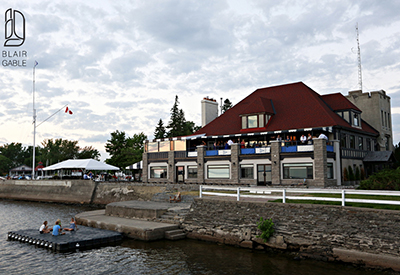 The end of the Great War was also the end the annual regatta and of this grand building, which completely burned to the ground. Sadly, everyone moved back to the original clubhouse and started anew with the name Britannia Boating Club. After four years of war and membership down below 150, the club started to regenerate and volunteers painted and spruced up the clubhouse. There were however, some members that did not truly appreciate sailing in cat rigged dinghies in the least. Mrs. Eileen Kirby loved her tennis. So, what else would a loving husband do? David, with the help of volunteers, built her a court in 1926, which became so addictive that two more were added the following year.
The end of the Great War was also the end the annual regatta and of this grand building, which completely burned to the ground. Sadly, everyone moved back to the original clubhouse and started anew with the name Britannia Boating Club. After four years of war and membership down below 150, the club started to regenerate and volunteers painted and spruced up the clubhouse. There were however, some members that did not truly appreciate sailing in cat rigged dinghies in the least. Mrs. Eileen Kirby loved her tennis. So, what else would a loving husband do? David, with the help of volunteers, built her a court in 1926, which became so addictive that two more were added the following year.
By the 1950s, with the wars over, the club finally settled on their name of Britannia Yacht Club. Boating was booming with International 14s, Lightnings, and Dragons competing not only in the club but around the country and the world. A sailing school was established and a new marine railway was constructed. At this point, moorings were in front of the club in unprotected waters. In a westerly blow, moving people and supplies from tender to yacht tested the seamanship of all concerned, not to mention the loss of boats washed ashore. A plan was put in place by Commodores Fuller and Bruce, with tremendous volunteer efforts by the members to use the unfinished and abandoned 1901 Ottawa River Power Project 2,000 foot long canal next to the Deschenes Rapids to provide the basis for a protected harbour. A conduit was laid through the base of the dam, which was constructed across the canal, to permit a constant circulation of water through the harbour. Over the next four years of harbour wall construction, Commodore Fuller became the driving force behind this monumental task of keeping the volunteer efforts from wandering.
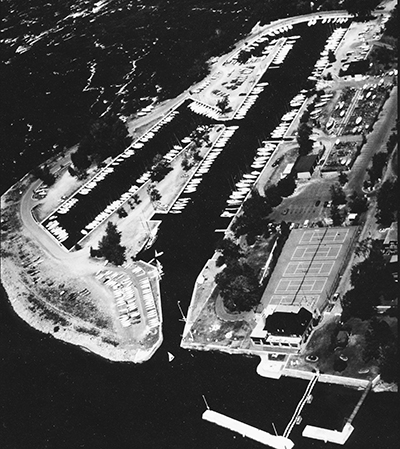 Rising waters in 1960 required efforts to increase the height of the dam to prevent flooding. More members were joining, which required more dock space for boats, so Past Commodore Fuller wasn’t done yet! He led the damming of the channel between the mainland and a small offshore island to create an inner harbour. Finally, in 1969 all harbour walls were completed totaling one mile to produce one of the most protected and sheltered harbours in North America to provide 250 wet moorings! Y-flyers and Sharks now moved to the forefront and were the boats of choice, giving inspiration to the first ever World Shark Championships held at BYC in 1966, and they will be held again during the summer of 2015 at BYC. Past Commodore Appleton also added his skills to the clubhouse by researching and decorating the upper deck around the cornice with over 100 burgees from clubs in Canada and around the world with which members had associations.
Rising waters in 1960 required efforts to increase the height of the dam to prevent flooding. More members were joining, which required more dock space for boats, so Past Commodore Fuller wasn’t done yet! He led the damming of the channel between the mainland and a small offshore island to create an inner harbour. Finally, in 1969 all harbour walls were completed totaling one mile to produce one of the most protected and sheltered harbours in North America to provide 250 wet moorings! Y-flyers and Sharks now moved to the forefront and were the boats of choice, giving inspiration to the first ever World Shark Championships held at BYC in 1966, and they will be held again during the summer of 2015 at BYC. Past Commodore Appleton also added his skills to the clubhouse by researching and decorating the upper deck around the cornice with over 100 burgees from clubs in Canada and around the world with which members had associations.
Britannia seemed to attract like-minded people who weren’t afraid of big projects that required ingenuity and hard work. Board member Len Ball, led the move in 1972 to finance an experimental resurfacing of one tennis court with all-weather plexipave, which was so successful that all five courts were resurfaced and had night lighting added by the mid 1980s, and four again in 2012. The experience of the highest flood waters ever recorded in 1979 had members in action again, rallied by telephone chain, to divert the flow of water by filling and placing 20,000 sandbags around the perimeter of the harbour. A removable flood gate with raised abutments was constructed shortly thereafter to prevent any further flooding. The dinghy fleet changed again to 505s and the introduction of the Laser by Bruce Kirby, an active member.
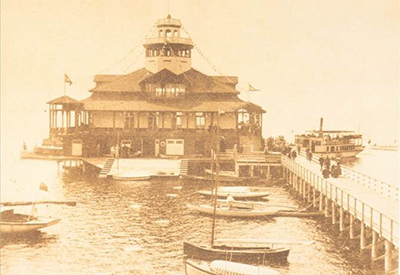 BYC has been the home of several Olympians and many world champions. In tennis, Don McDairmid played for Canada in the Davis Cup and was inducted into the Sports Hall of Fame. In paddling, Frank Amyot won a gold medal at the Olympic Games. In sailing, the “Crazy Ivan” team of Jamie Foy, David O’Sullivan, and David Foy has countless Canadian, North American, and World Championships. Bruce Kirby designed the Laser as well as 63 other boats, but also won honours around the world in the International 14, and represented Canada in the Finn and Star classes at the Olympics. Livius (Liv) Sherwood, purchased a 14 foot lapstrake cat dinghy and then asked Bruce Kirby to helm for him and teach him the ropes for a year. This led to many competitions including wins in the Shark Canadian and North American Championships, winning CYA Rolex Sailor of the year, serving as an International Judge on prestigious juries, and being part of the international committee appointed to review and rewrite the RRS (Racing Rules of Sailing). Liv became the driving force behind implementing the sailing school, which today boasts an outstanding junior facility. The Bytown Brigantine Black Jack boat also runs out of BYC providing an outward bound program for youth to face new challenges, take on responsibilities, and gain confidence aboard Tall Ship sailing adventures.
BYC has been the home of several Olympians and many world champions. In tennis, Don McDairmid played for Canada in the Davis Cup and was inducted into the Sports Hall of Fame. In paddling, Frank Amyot won a gold medal at the Olympic Games. In sailing, the “Crazy Ivan” team of Jamie Foy, David O’Sullivan, and David Foy has countless Canadian, North American, and World Championships. Bruce Kirby designed the Laser as well as 63 other boats, but also won honours around the world in the International 14, and represented Canada in the Finn and Star classes at the Olympics. Livius (Liv) Sherwood, purchased a 14 foot lapstrake cat dinghy and then asked Bruce Kirby to helm for him and teach him the ropes for a year. This led to many competitions including wins in the Shark Canadian and North American Championships, winning CYA Rolex Sailor of the year, serving as an International Judge on prestigious juries, and being part of the international committee appointed to review and rewrite the RRS (Racing Rules of Sailing). Liv became the driving force behind implementing the sailing school, which today boasts an outstanding junior facility. The Bytown Brigantine Black Jack boat also runs out of BYC providing an outward bound program for youth to face new challenges, take on responsibilities, and gain confidence aboard Tall Ship sailing adventures.
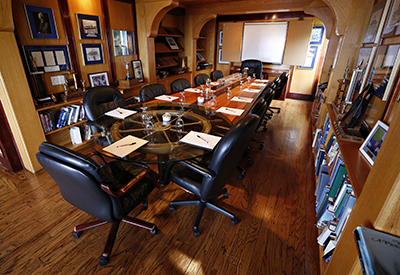 Cruising up the river, pitching a tent, sleeping on the ground, and then trying to get back to the club for work on Monday mornings without a motor has been a mainstay of BYC. Annual cruises that were started in 1914 continue and were moved to a week-long format in 1987. To ensure camping grounds for future cruises and to honour members who gave their lives in the two world wars, in 1946 land was purchased at Baskin’s Beach, a few miles up River on the Ontario side and named Britannia Boating Club Memorial Park. A cairn has been erected to commemorate BYC members who served in the Armed Forces.
Cruising up the river, pitching a tent, sleeping on the ground, and then trying to get back to the club for work on Monday mornings without a motor has been a mainstay of BYC. Annual cruises that were started in 1914 continue and were moved to a week-long format in 1987. To ensure camping grounds for future cruises and to honour members who gave their lives in the two world wars, in 1946 land was purchased at Baskin’s Beach, a few miles up River on the Ontario side and named Britannia Boating Club Memorial Park. A cairn has been erected to commemorate BYC members who served in the Armed Forces.
Fairly new member and Rear Commodore, Dan Delorey, loves the social aspect of BYC where it is welcoming, you can meet a lot of people, and take any opportunity celebrate every occasion known to man! Vice Commodore and longtime member, Rob Braden, feels that their uniqueness comes from the fact that they are a year round destination for many. From movie nights to yoga to committee meetings, the club is alive and active all year long. There is sailboat racing almost every night with around the bases 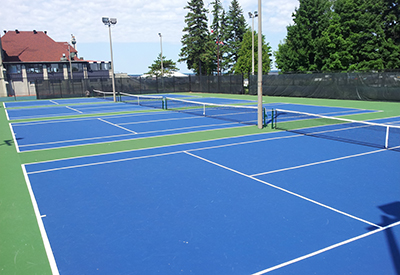 or up-river races, tennis, volleyball, basketball, a protected swimming area on the river, children’s play area, and cruising. The low membership fees, dockage and storage facilities for boats help to make BYC affordable to many. It seems odd that a city club can have dockage along the waterfront and in less than two hours you can be anchored and ride out a mooring away from the city with trees on either side of the river…. Heaven.
or up-river races, tennis, volleyball, basketball, a protected swimming area on the river, children’s play area, and cruising. The low membership fees, dockage and storage facilities for boats help to make BYC affordable to many. It seems odd that a city club can have dockage along the waterfront and in less than two hours you can be anchored and ride out a mooring away from the city with trees on either side of the river…. Heaven.
Britannia Yacht Club; 2777 Cassels Street; Ottawa, Ontario K2B 6N6; 613-828-5167; info@byc.ca
Photo Captions:
Photo 1 – Black Jack – youth training ship.
Photo 2 – Upper deck.
Photo 3 – Clubhouse.
Photo 4 – Harbour before Junior Club.
Photo 5 – Moorings at the Britannia Park pier.
Photo 6 – Boardroom.
Photo 7 – Tennis courts.
